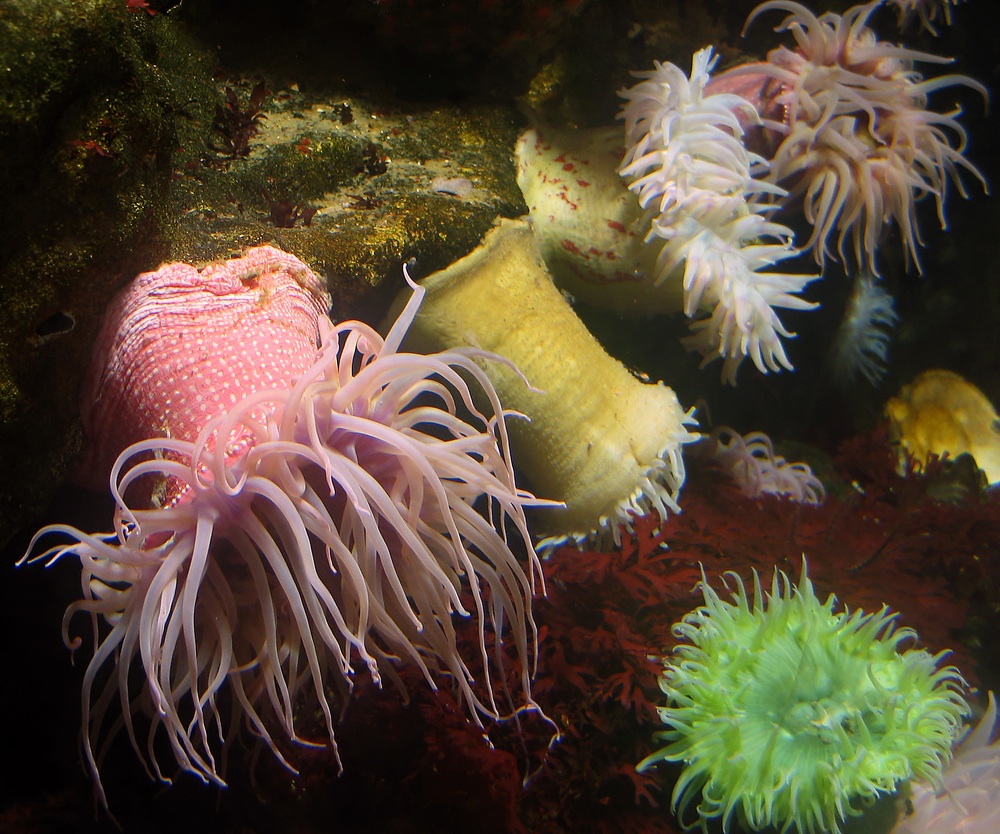Reef Creatures - Sea Anemones
It is often thought that they are plants because of their name, but sea anemones are animals and in fact, they can be quite aggressive, being predatory by nature. Their name actually originates from the shape of their mouth, surrounded by tentacles, which together are said to resemble the flower of an anemone in appearance.At least 9,000 different sea anemones can be found in the world’s oceans, with the majority living in tropical waters. A number of these are free-swimming, at least for a stage in their life cycle. They then anchor themselves to rocks and other similar underwater sites. Here they rely on their stinging tentacles to capture small invertebrates and fish on which they feed.

The beautiful and sometimes bizarre appearance of sea anemones has been a source of fascination to marine aquarists for many years but only recently has there been the available technology to enable them to be kept and studied in a home aquarium. Although still a specialist branch of fish-keeping, tanks housing ‘invertebrates’ with few, if any, fish present, are growing in popularity now.
Back in the early 1960s, it became clear that rocks which already supported marine life were essential to the success of this type of aquarium. The term ‘living rock’ entered the vocabulary of marine fish-keepers during this era. While many marine aquarists concentrated on the quality of the artificial sea water in such systems, it became clear by the 1970s that lighting was also highly significant to keeping sea anemones, corals and similar creatures successfully in these surroundings.
Importance of correct lighting
A high light intensity in the aquarium ensured the development of the marine algae. In the same way that most household plants will not grow in the dark, so these algae will fail to thrive, requiring light for the process known as photosynthesis. Certain algae are also to be found within the body of many anemones and are vital to their well-being. It seems that these primitive plants help to provide some of the sea anemone’s nutritional needs but the precise nature of their relationship is still unknown.
Without this algal presence however, the health of the sea anemones will suffer and they are then likely to die. Studies have shown that these particular marine algae respond best to light from the blue end of the spectrum, which penetrates most effectively into the sea. Specially designed lights for this purpose are now available.
Artificial sea water for the aquarium can now be made up easily, using special sea salt mixtures available for this purpose. In order to maintain the water quality in the aquarium once the sea anemones are present, a filtration system is essential.
At first the water will be effectively sterile and the addition of a starter culture will help to introduce beneficial bacteria here. These in turn will colonise the filter, multiplying rapidly and ensuring the breakdown of the waste products in the aquarium once it is established. Again, advances in filter technology have helped to enable sea anemones to be kept in good health in aquarium surroundings.
Water conditions
Sea anemones can be found in waters ranging from 8°C to 28°C (46-82°F) in temperature and it is vital to equilibrate the heater-stat in their aquarium accordingly. Most marine aquarists favour tropical sea anemones but keeping them too warm is likely to be harmful.
It is also important to plan the layout of the aquarium carefully, so that sea anemones which are solitary by nature do not come into contact with each other when their tentacles are fully extended. If they are denied adequate space, there may well be fatalities, but in suitable surroundings, sea anemones can be long-lived. Their potential life expectancy can be measured in decades in some cases.
Fish generally should be excluded from an aquarium of this type, along with algal eaters, such as cowries, because of the damage which they can cause to the plant life in such surroundings. Feeding sea anemones is actually quite straightforward however, with specialist foods available for this purpose.
Choosing the sea anemones themselves in the first instance can be more of a problem, simply because it is hard to recognise illness in these creatures. Looking at the tentacles and seeing these are fully extended, with no signs of shrivelling at their tips, can be a helpful indicator. Similarly, the column which supports the anemone on the rock should be stout and strong.